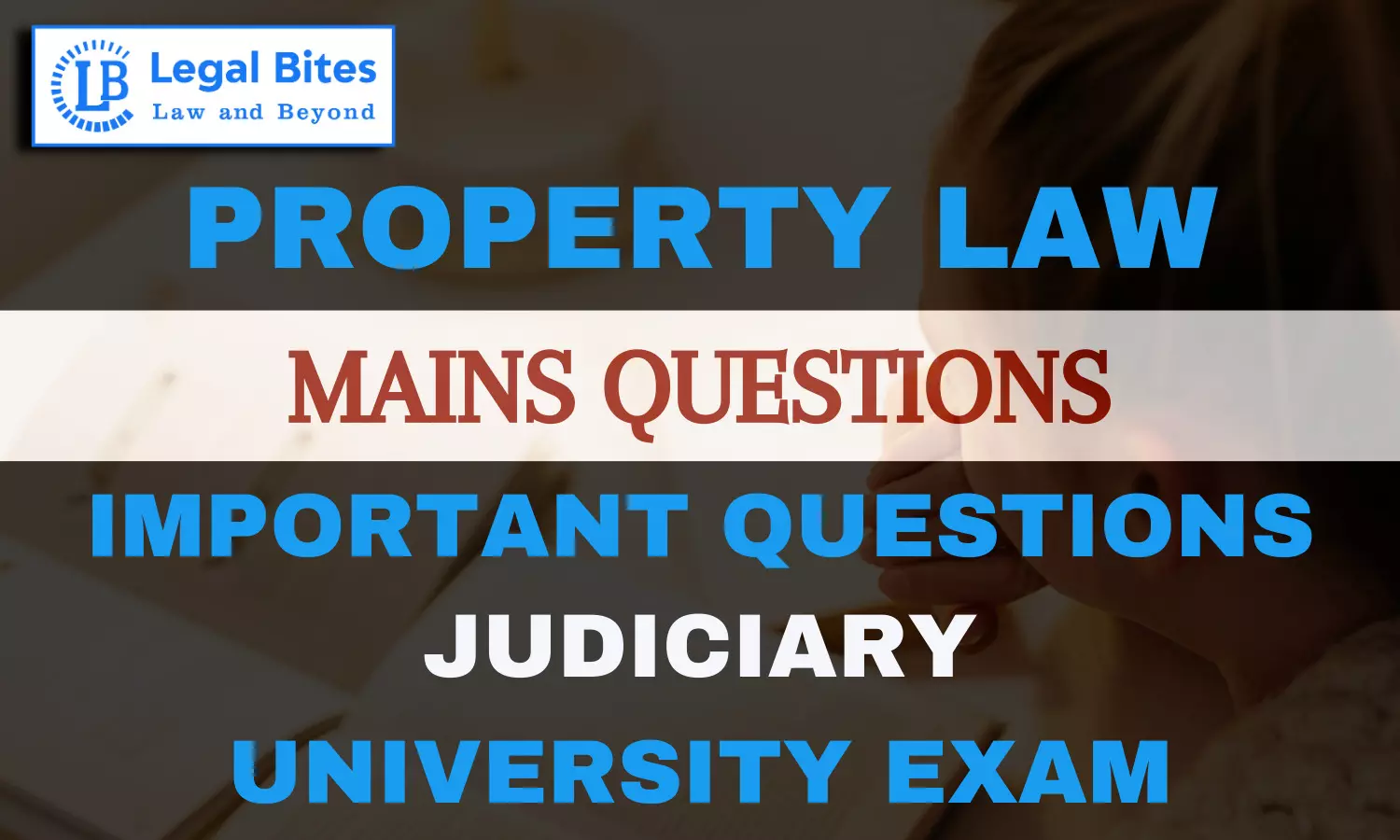Under what circumstances is a transfer by an ostensible owner of immovable property binding on the real owner?
Find the answer to the mains question of Property Law only on Legal Bites.

Question: Under what circumstances is a transfer by an ostensible owner of immovable property binding on the real owner? [UPJS 1983]Find the answer to the mains question of Property Law only on Legal Bites. [Under what circumstances is a transfer by an ostensible owner of immovable property binding on the real owner?]AnswerThe Transfer of Property Act, 1882, was enacted to simplify property transfers and make them accessible to the wider population. One concept within this act, "Transfer by...
Question: Under what circumstances is a transfer by an ostensible owner of immovable property binding on the real owner? [UPJS 1983]
Find the answer to the mains question of Property Law only on Legal Bites. [Under what circumstances is a transfer by an ostensible owner of immovable property binding on the real owner?]
Answer
The Transfer of Property Act, 1882, was enacted to simplify property transfers and make them accessible to the wider population. One concept within this act, "Transfer by an Ostensible Owner," was introduced to protect the rights of innocent third parties concerning property ownership.
In the notable case of Ramcoomar Koondoo v. John and Maria McQueen, (1873)11BengLR46, the plaintiff inherited property through a will but later discovered that someone else had purchased the property in her name and subsequently sold it to a third party, leading the latter to believe he had legitimate title to the property. This transaction was a 'benami' transaction, known only to the seller. The plaintiff sought the return of the property from the third party, but the judicial committee held that:
"It is a principle of natural equity, universally applicable, that where one person allows another to present himself as the owner of an estate, and a third person purchases it in good faith, believing the apparent owner to be the real owner, the person allowing the apparent owner to do so cannot recover the property unless they can prove either direct notice or constructive notice of the real title or circumstances that should have prompted them to investigate, leading to the discovery of the true title."
This case laid the foundation for the doctrine of ostensible ownership, as seen in Section 41 of the Act.
Section 41 of the Act
Section 41 of the Transfer of Property Act deals with ostensible ownership, providing that when a person is the ostensible owner of immovable property and transfers it for consideration, with the consent (express or implied) of interested parties, the transfer will not be voidable on the grounds of the transferor's lack of authorization. However, the transferee must have taken reasonable care to ascertain the transferor's authority and acted in good faith.
Key Requirements for Section 41
The section outlines several key conditions for the benefit of this provision:
Ostensible Ownership: The person transferring the property must be an ostensible owner.
Consent from the Real Owner: Consent, whether explicit or implied, from the real owner is essential.
Consideration: A transfer by an ostensible owner must involve consideration; it cannot be a gift.
Reasonable Care: The transferee is required to exercise reasonable care in verifying the transferor's authority and must act in good faith.
Ostensible Owner
An ostensible owner is not the actual owner but can represent themselves as the owner in dealings with third parties. They acquire this status due to the real owner's willful neglect or acquiescence. For example, when a property owner allows a family member to manage and use the property, that family member becomes the ostensible owner. If they subsequently sell the property, the real owner cannot claim it back.
Consent from the Real Owner
This provision is designed to protect innocent third parties who purchase the property when the real owner remains passive or has not protested the transfer. However, the real owner must be capable of giving consent, and it should not be obtained through unlawful means. Minors, for instance, cannot provide valid consent.
Implied Consent
Consent can be implied from the conduct of the real owner. For instance, if the real owner remains silent while another person deals with the property as if it were their own, this can be considered implied consent. Silence may amount to consent if it leads a third party to believe the ostensible owner is the real owner.
Consideration
A transfer by an ostensible owner must involve consideration, as defined by the Indian Contract Act, 1872, which requires consideration for any contract. Property transfer by an ostensible owner is essentially a contractual transaction.
Reasonable Care
The transferee must exercise reasonable care in verifying the transferor's title. This includes checking relevant documents and ensuring they have acted like a reasonable person in determining the property's title.
Good Faith
The transferee must genuinely believe that the ostensible owner is the true owner, considering all reasonable inquiries and due diligence. If the transferee becomes aware of the transferor's lack of authority, they cannot claim good faith.
Burden of Proof
The burden of proof rests with the transferee to demonstrate that the transferor was the ostensible owner and had the authority to sell the property. They must also prove that they acted in good faith and took reasonable care. This burden is placed on the transferee to ensure they have not been negligent in their dealings.
Therefore, under Section 41, a transfer by an ostensible owner is binding on the real owner when certain conditions are met, such as ostensible ownership, real owner's consent, consideration, reasonable care, and good faith on the part of the transferee. This provision strikes a balance between protecting the interests of innocent third parties and ensuring that real owners are not unjustly deprived of their property.

Mayank Shekhar
Mayank is an alumnus of the prestigious Faculty of Law, Delhi University. Under his leadership, Legal Bites has been researching and developing resources through blogging, educational resources, competitions, and seminars.
